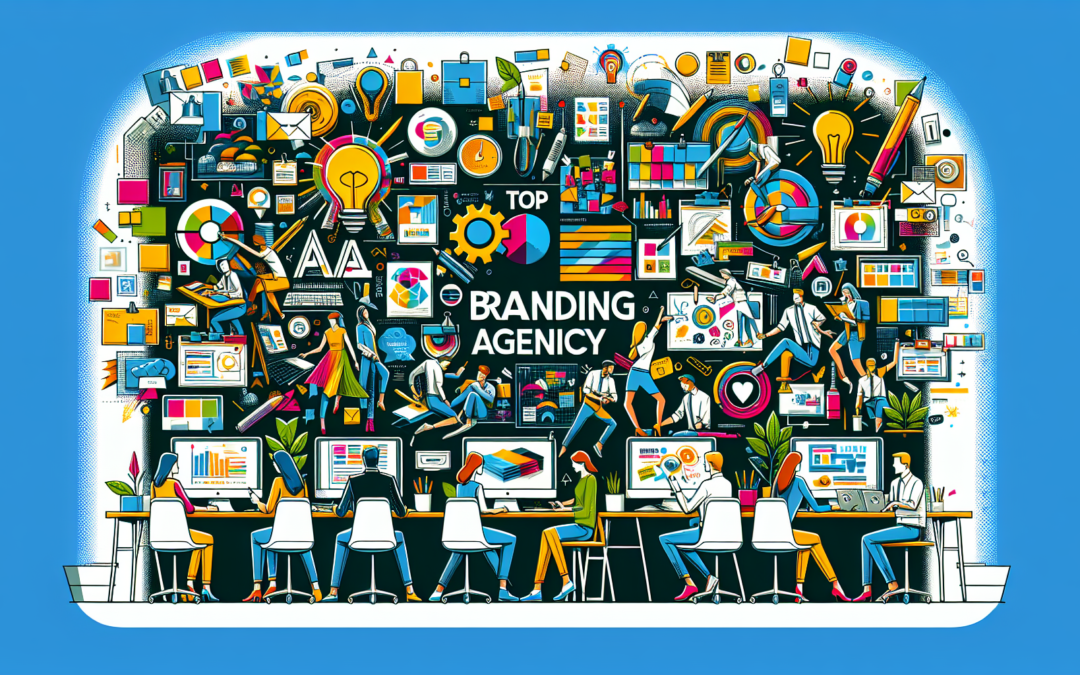
Top Branding Agencies: Enhancing Your Business Identity
DISCLAIMER:
I bet you’re wondering why in the hell would I post an article on my tiny brand strategy consultation about other branding agencies.
The reasons are simple.
I don’t serve everyone, and there are plenty of designs from other brand professionals that I admire and encourage you to check out.
And finally, there’s plenty of work to go around. I don’t believe others have to lose in order for me to win. And hopefully, you have a similar mentality going into your line of business.
Introduction to Branding Agencies
Branding is a critical aspect of any business, serving not just to create a memorable identity but also to communicate the core values, uniqueness, and essence of the enterprise. In today’s competitive marketplace, where customers are bombarded with choices, a strong brand can set you apart, foster customer loyalty, and even justify premium pricing. This is where branding agencies come into play. These specialized firms are adept at crafting and refining your business identity to ensure it resonates with your target audience, thereby enhancing visibility and viability in the market.
How Branding Agencies Amplify Business Identity
Top branding agencies employ a blend of creativity, market insights, and strategic thinking to develop a comprehensive brand identity. This process includes logo design, color schemes, typography, and messaging that together form a distinctive brand persona. Beyond visual elements, they work on creating a brand voice and storytelling, which helps in making an emotional connection with the audience. Such agencies dive deep into understanding the business’s goals, target market, and competitive landscape to ensure that the branding not only stands out but is also aligned with the business’s overarching objectives.
Benefits of Working with Branding Agencies
The expertise and outside perspective that branding agencies offer can be invaluable. They bring a creative vision that might be lacking in-house, and their experience with diverse clients provides a broader understanding of what works across industries. Moreover, a well-defined brand strategy aids in unifying marketing efforts, ensuring consistency across all channels, which is crucial for building brand recognition and trust. Additionally, by accurately conveying the unique selling propositions and values of a business, agencies can help attract the right audience and even potential investors.
Top Branding Agencies to Consider
While there are numerous branding agencies, each offering unique services, some have gained recognition for their exceptional approach and results. Here are a few top contenders:
- Interbrand: Known for its global reach and strategic approach, Interbrand has helped numerous companies across different sectors achieve a dynamic and cohesive brand identity.
- Pentagram: Offering a mix of design, strategy, and marketing services, Pentagram is lauded for its creative and impactful brands that resonate across various media.
- Landor: With a focus on brand strategy and a vast international presence, Landor has a reputation for transforming client’s ideas into brands that captivate and inspire.
- Wolff Olins: Renowned for its forward-thinking approach, Wolff Olins works on creating brands that are not only visually compelling but also ready to face future market challenges.
- Weiden+Kennedy: Although primarily known for its advertising campaigns, Weiden+Kennedy also offers robust branding services that ensure brands are impactful and memorable.
Selecting the Right Branding Agency for Your Business
Choosing the right branding agency is critical and involves thorough research and consideration. It’s important to look at each agency’s portfolio to understand their aesthetic and approach. Equally, evaluating their understanding of your industry and willingness to dive deep into your business essence can give you insight into their capability to accurately represent your brand. Establishing clear communication lines and understanding their process will help ensure that the agency’s direction aligns with your business goals. Finally, remember that building a brand is an investment, and selecting an agency that shares your vision can make all the difference in achieving long-term success.
Conclusion
In conclusion, branding agencies play a pivotal role in shaping the identity and success of businesses across various industries. By partnering with a top branding agency, businesses can equip themselves with a distinct and compelling brand identity that stands out in the crowded marketplace. These agencies not only enhance visual representation but ensure that the brand’s values and stories are communicated effectively, paving the way for deeper customer connections and sustained business growth.





Recent Comments